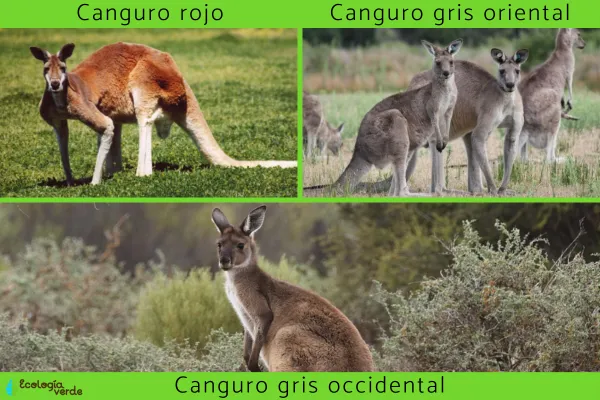Kangaroos are often seen as Australia’s national icons. Asking whether they are endangered, however, needs a nuanced answer: the best-known large kangaroo species are not currently classified as endangered, yet they do face real and growing pressures. This guide covers their biology, species overview, conservation status, the broader drivers of extinction, and practical actions humans can take.

Powerful locomotion: Kangaroos move by hopping rather than running. Their oversized hind legs and muscular tail act like a spring-and-balance system, enabling bursts of up to ~70 km/h under ideal conditions.
Australian endemics: Wild kangaroos occur naturally only in Australia (with some nearby islands).
Diet & size: Primarily herbivorous grazers, feeding on grasses and other plants. Adults of the large species are typically around 1.5 m tall; males can exceed that and weigh up to ~80 kg (species and sex vary). Lifespan in the wild is commonly 10–18 years.
Marsupial reproduction: Females carry young in a pouch (marsupium). After a short gestation (about 30–36 days in large kangaroos), a bean-sized joey crawls into the pouch to continue developing for ~8 months, weaning around 10–12 months.
Heat management: In hot, arid climates they lick their forearms and rub the chest to promote evaporative cooling, seek shade, rest during peak heat, and pant; the forearm’s rich blood supply aids heat loss.
Social life: Often found in mobs (groups). Activity peaks around dawn and dusk. Males are typically larger (sexual dimorphism) and may spar for breeding access.

Red Kangaroo (Osphranter rufus; formerly Macropus rufus)
The largest kangaroo. Males often appear reddish-brown; females can be bluish-grey (“blue flyer”). Found across central and western arid Australia.
Eastern Grey Kangaroo (Macropus giganteus)
Tall, grey-brown animals widespread in eastern Australia’s forests and grasslands.
Western Grey Kangaroo (Macropus fuliginosus)
Occurs in western and southern Australia; somewhat smaller on average. Males in breeding condition may give off a curry-like scent.

The kangaroo family also includes related macropods (e.g., wallaroos, euros), but this article focuses on the three large, familiar species.
Overall, the large kangaroos listed above are currently assessed as Least Concern (LC) at a global scale—they are not endangered in the same critical sense as many other species. That said, this status does not mean “no problems”:
Regional fluctuations: Droughts, extreme heat, and large wildfires can trigger sharp local declines.
Human–wildlife conflict: Habitat fragmentation in agricultural and peri-urban areas increases vehicle collisions and reduces safe movement.
Commercial take: In parts of Australia, regulated harvests occur under quota-based management. Robust science and compliance are essential; poor management would heighten risk.
Bottom line: Kangaroos as a whole are not endangered today, but ongoing monitoring, evidence-based management, and habitat connectivity are crucial to keep them that way.
Wildfire (natural and human-caused): Loss of habitat and food resources; heat stress.
Pollution: Pesticides, plastics, heavy metals, and degraded water quality.
Deforestation & land conversion: For industry, intensive agriculture, and urban growth, leading to habitat loss and fragmentation.
Infrastructure barriers: Roads and fences disrupt movement and increase roadkill.
Invasive species: Predation and competition (e.g., foxes, feral cats); invasive plants altering fire regimes and forage.
Illegal or poorly controlled take: Poaching, unregulated trade.
Climate change: More frequent heatwaves, severe droughts, and altered vegetation and water availability.
These pressures usually act together, pushing local declines toward broader population reductions if not addressed.
Fire management & readiness: Safe prescribed burning where appropriate, fuel-load management, early warning and rapid response.
Pollution and emissions reduction: Cut single-use plastics and harmful chemicals; adopt low-carbon transport; protect waterways and wetlands.
Strengthen and follow wildlife laws: Support science-based quotas, monitoring, and enforcement; penalize illegal take and habitat destruction.
Maintain landscape connectivity: Wildlife crossings and fencing design that guide animals to safe passages and reduce vehicle collisions.
Sustainable land use: Retain native vegetation, protect riparian zones, manage grazing intensity, and control invasive species.
Public participation: Report roadkill hotspots, join local conservation projects, refuse illegal wildlife products, and share factual information.
Kangaroos are not currently endangered, but their future security depends on long-term monitoring, responsible management, and safeguarding connected habitats in a warming, human-dominated landscape.
animal tags: kangaroos
We created this article in conjunction with AI technology, then made sure it was fact-checked and edited by a Animals Top editor.